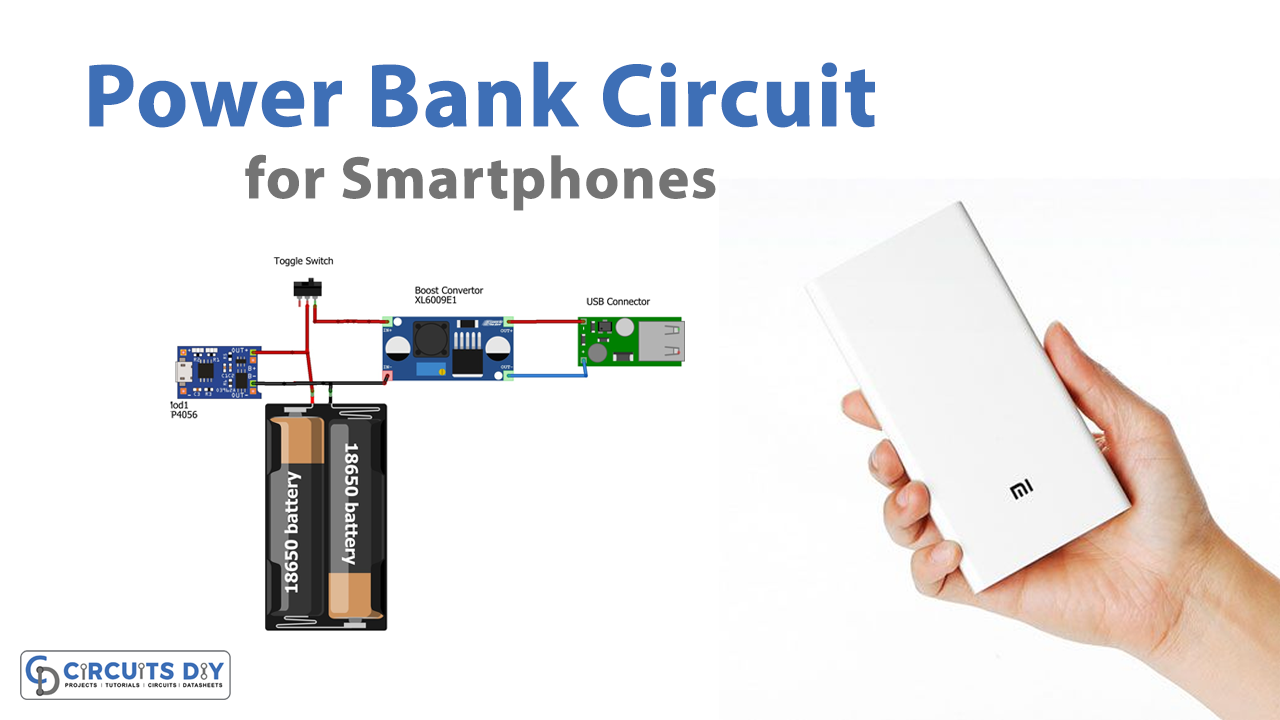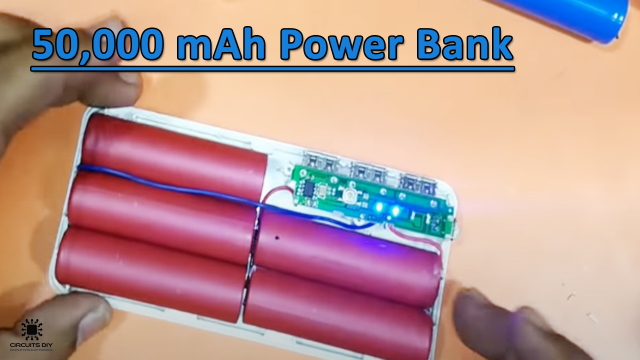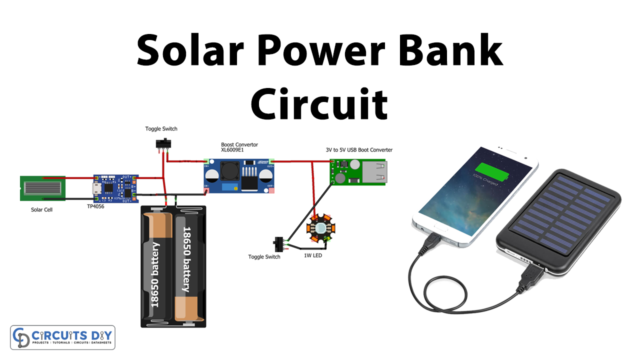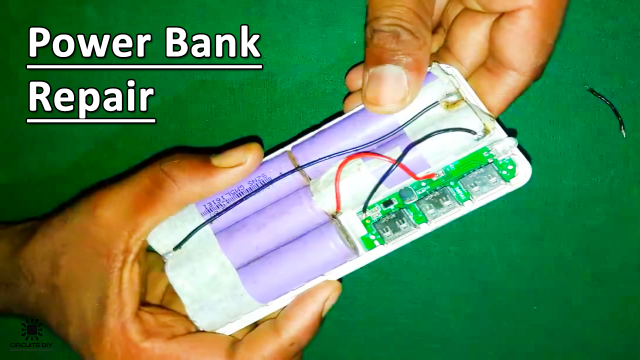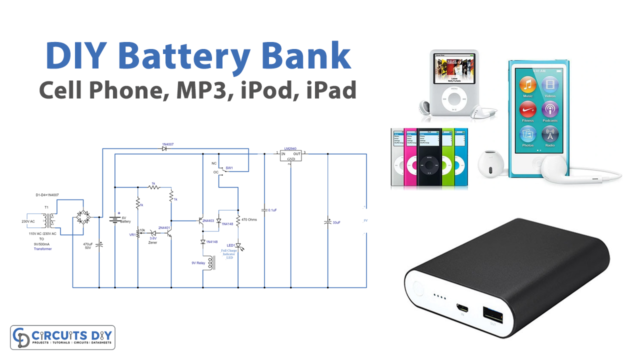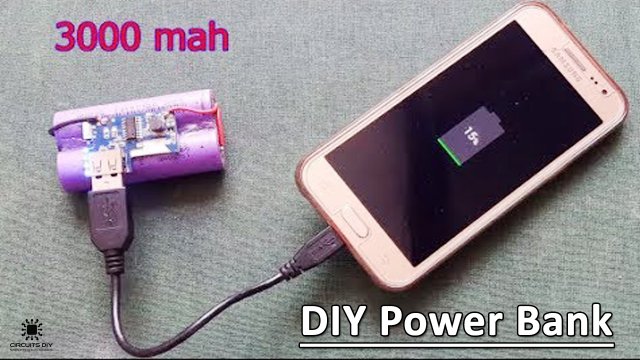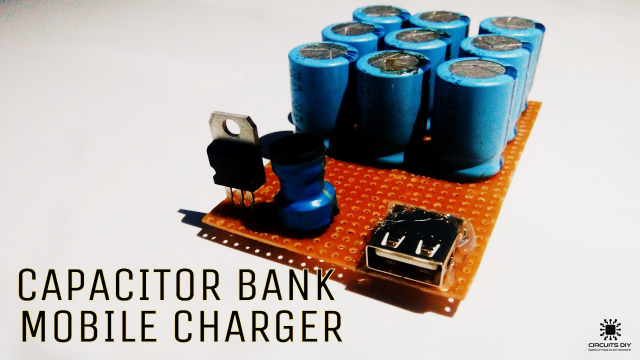While traveling and during emergency requirements, power bank circuits have gained significant popularity due to their portability and ability to charge any cell phone. It is basically a battery bank box that is initially fully charged by the user at home and then carried outdoors while traveling. When the users find their cellphone or smartphone battery low, then they connect the power bank to their cellphone for a quick emergency topping-up. It is an additional power source that ensures power backups when we travel or in emergency situations. Here we design a portable cost-effective power bank by using a TP4056 Li-ion Battery charger module with variable DC output. In this, you can change the output voltage range depending on your phone battery specification. The TP4056 has over-discharge protection so over-discharge cannot be a problem in this circuit.
Hardware Required
| S.no | Components | Value | Qty |
|---|---|---|---|
| 1 | Li-ion Battery charger module | TP4056 | 1 |
| 2 | Lithium-ion battery | 18650 2600mAh | 2 |
| 3 | DC-DC Converter | XL6009 | 1 |
| 4 | Connecting Wires | – | – |
| 5 | On/Off Push Button | – | 1 |
Working Explanation
As we can see this circuit has three stages, first one is the TP4056 Li-ion Battery charger module. Here input power supply is from 3.7V to 5V to this board, and it gives output to the battery.
Then in the second stage 18650 Lithium-ion battery, 2600mAh is used, solder the same polarity in parallel. You can also connect the ON/OFF toggle switch as per your requirement. Now the third stage is the XL6009 DC-DC converter this board drives the battery supply to the USB connector (class A female), where the mobile phone is connected for charging. To get proper range output voltage vary the trim pot in the Dc-Dc converter board. For safety before connecting the smartphone, check the output voltage and current range. Because excessive or reverse polarity can be dangerous to your mobile battery.
Power Bank Circuit Diagram
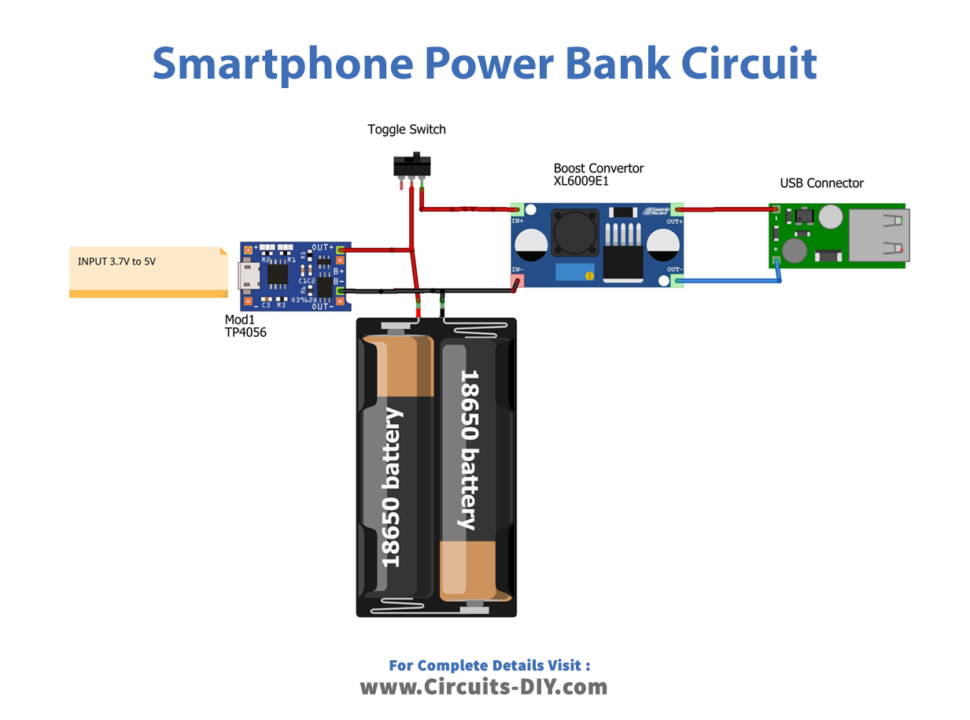
In this circuit diagram, there are two segments, the first one is a Li-ion battery charger and the second one is an XL6009 DC-DC converter. This circuit diagram is given for reference and is available on the breakout board widely.
Applications
Can be used to charge a cellphone outdoors during emergency situations when an AC outlet is unavailable for charging the cellphone.


